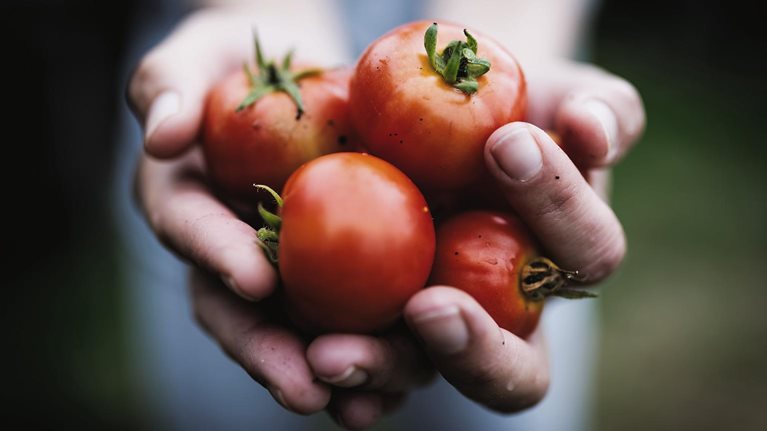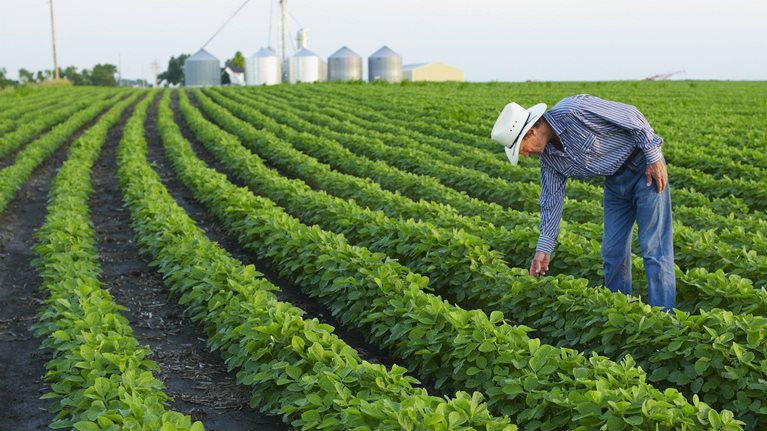
Do you get three square meals a day? Not everyone can fill their plate—and “food insecurity” is one way of describing that challenge.
According to the US Department of Agriculture, food insecurity is the economic and social conditions that limit access to adequate food. People who face food insecurity do not generally have sufficient resources to access food on a regular basis to sustain a healthy lifestyle—so they might eat lower-quality foods or skip meals entirely.
Food insecurity affects people around the globe: Asia, Europe, North America, Africa, and beyond. According to the UN Food and Agriculture Organization (FAO), upward of 2.3 billion people worldwide lacked access to adequate food in 2020.
War can also affect the access people have to food—in and out of war zones. Ukraine is one of the world’s six breadbasket regions, and Russia’s invasion is threatening to tilt the food system into global crisis.
In this article, we’ll examine who is affected by food insecurity, how food is used and wasted, and the ways in which food systems have global impact.
Who is most vulnerable to food insecurity?
Anyone can face food insecurity. The FAO estimates one in three people globally faced food insecurity in 2020. The organization measures varying degrees of severity, using the Food Insecurity Experience Scale, with particular attention paid to moderate and severe food insecurity. Here’s how it defines each:
- Moderate food insecurity occurs when people are forced to reduce the quality or quantity of the food they eat and, due to lack money or other resources, are uncertain they’ll be able to get food.
- Severe food insecurity, in contrast, is when people are completely without food; some in this category will have gone without food for days. While people in this group are often referred to as the “hungry”—and that may be what most people think of when they imagine food insecurity—they are, in fact, at an extreme end of the food security spectrum.
Both of these states are monitored in the context of progress toward the UN’s Sustainable Development Goals (SDGs); The second of the 17 goals is “zero hunger,” or the broader aim to stamp out hunger, reach food security, improve nutrition, and push for sustainable agriculture.
Here are some fast facts about global food insecurity from the FAO publication The state of food security and nutrition in the world 2021:
- Moderate and severe food insecurity have been on the rise for years, but the COVID-19 pandemic accelerated the challenge. In 2020, moderate and severe food insecurity rose to 30.4 percent globally; in 2014, it was 22.6 percent.
- Nearly 12 percent of people globally (roughly 928 million) faced severe food insecurity in 2020.
- In Africa, hunger affects 21.0 percent of the population, with lower levels seen in Asia (9.0 percent) and Latin America and the Caribbean (9.1 percent). But by numbers alone, Asia accounts for more than half of the world’s undernourished people (418 million), and Africa for more than a third (282 million).
- While food insecurity rose in prevalence in every region from 2019 to 2020 (even in North America and Europe, rising for the first time since data collection began), some regions saw bigger increases than others. Latin America and the Caribbean saw the sharpest rise, followed by Africa.
- More women than men face food insecurity. Looking at the prevalence of moderate or severe food insecurity, it was 10 percent higher among women than men in 2020.
- The affordability of healthy, nutritious food is also a concern. In 2019, high costs, coupled with income inequality, meant healthy diets were out of the question for about three billion people globally.
- The major drivers of food insecurity included conflict, climate variability and extremes, plus slowdowns or downturns in economies.
How has the war in Ukraine affected the global food supply?
Russia’s invasion of Ukraine has shaken several important pillars of the global food supply. In the past, supply and demand scenarios were usually determined by weather and other supply-related events. But a war of this scale in Europe has created a whiplash effect in the food supply chain. Because Russia and Belarus are critical for the export of fertilizer, the war is triggering secondary effects in other breadbaskets including Brazil.

Looking for direct answers to other complex questions?
According to McKinsey analysis, there is cause for concern: the world—with the exception of China—seems unprepared for a food crisis of this scale.
Looking ahead to how the war in Ukraine will affect the global food supply chain, the situation seems to be on track for a severe impact scenario. That means a missed 2022 planting season and disruption of future planting seasons. A worsening refugee situation would mean less available agricultural labor to carry out planting and harvesting seasons. An escalation of sanctions would include agricultural commodities, meaning countries that need them no longer have access to critical fertilizers and other agricultural goods. This could result in a significant decrease in global food trade, forcing countries to rely on their own reserves and a tightening global supply.
Who is most affected by food insecurity in the United States?
While some think of food insecurity as an issue specific to emerging economies, many people in the United States face this challenge. Understanding the nuances may yield more effective solutions.
How many Americans are food insecure? More than 40 million in 2021, according to Feeding America, which indicates that some of the US populations most affected by food insecurity include seniors, children, Black Americans, Latinos, and those who live in rural communities. In other regions, different factors might drive community hunger.
The root causes of food insecurity are complex, and addressing hunger may mean tackling challenges more holistically to help vulnerable populations. Doing so could entail grappling with larger societal issues, including poverty, affordable housing, healthcare, racism, and low wages. Those who live in food deserts—areas that have limited options for affordable and healthy food—and whose inhabitants are low-income with reduced mobility are often at risk of being food insecure.
Here are some fast facts about food insecurity in the United States:
- In the United States, regions with a higher percentage of food-insecure people tend to have higher rates of chronic illness such as diabetes, obesity, and hypertension.
- In 2020, 38.3 million people in the United States lived in food-insecure households.
- Since the onset of the COVID-19 pandemic, there was a 46 percent increase in the number of Americans who are food insecure. For communities that face food insecurity, the likelihood of dying from COVID-19 per 100,000 residents was 1.4 times higher.
- Fifty-eight percent of Gen Zers report that they have two or more unmet social needs (which includes food, income, employment, education, and housing, among others), compared with 16 percent of people from older generations.
- Black households experience food insecurity at roughly 2.5 times the rate of White households.
- Latino households see about two times the rate of food insecurity of White households.
What about food banks and food insecurity?
Food banks collect and store donated food and then distribute it to organizations—including food pantries, shelters, and meal programs—that directly serve individuals. Some are also part of networks, such as the Feeding America network, that offer additional services. These organizations play a crucial role in fighting community hunger, especially in the COVID-19 era, when the United States experienced a surge in demand for food support.
When that surge hit, community organizations responded swiftly in a variety of ways. Some food banks leveraged data and analytics to help address these unprecedented needs, for example, by using forecasting tools to determine the potential need based on different variables, such as the trajectory of virus cases, unemployment rates, and government interventions. Others harnessed tech tools to look closer at their distribution networks and optimize them to serve more community members.
More broadly, some food banks have embarked on digital transformations to improve their operations and get more food to people in need—and to do it quickly. One food bank in Boston embraced a people-centric approach to meet new customer needs and expectations. Why? To create better experiences for the food bank’s stakeholders, including not only people experiencing food insecurity but also food distribution partners, volunteers, and donors.
What is food waste?
Food waste refers to edible food fit for human consumption that has been discarded. This includes spoiled food and unused or discarded food from homes, grocery stores, restaurants, and food service establishments. It also encompasses food loss at the farm level—for example, food that’s grown but never harvested because of labor shortages or other issues.
How much food is wasted in the world?
Roughly one-third of the food that is produced worldwide is never eaten, which amounts to 1.3 billion tons of wasted food every year. It is estimated that about 30 percent of the global food supply goes to waste.
The world grows more than enough food to feed everyone, but a good portion of it is lost or wasted in the global supply chain. Here’s a breakdown of where food gets lost or wasted:
- About 11 percent of food is lost on the farm or in agricultural settings. Some of it is never picked, and some of what is picked can be damaged or spoiled.
- About 8 percent of food is lost after harvest while in transit from farms to factories and markets or because it cannot be stored safely.
- About 1 percent of food is lost while it is processed in factories because it does not meet quality standards. Mechanical problems in factories could also ruin the food during processing.
- About 6 percent of food is lost in markets and stores. That includes unsold, expired, and overripe food.
- About 10 percent of food is wasted in homes and restaurants. Families and businesses often buy more food than they can consume, which results in food being tossed in the garbage.
What is a food system?
Under the definition used by the International Food Policy Research Institute, a food system refers to all of the people, interactions, and processes involved in feeding the population. That might start from planting crops and growing food to harvesting it, moving it from one place to another, through to processing inputs, selling them, and onward to eating food and disposing of waste.
Resilient food economies generally rest on four building blocks:
- agricultural production that is efficient, taking advantage of innovative technologies and practices
- trade and investment approaches that are tailored appropriately
- domestic markets that function well
- strategic reserves of both food and water
But today, these systems may not function as effectively as they could. Transforming food systems won’t be easy, but it’s necessary to meet the food and nutrition security needs of the global population. Doing so requires reimagining incentives for food system actors. Research from the Food Systems Initiative of the World Economic Forum, in collaboration with McKinsey, proposes four pathways to do so:
- repurposing public investments and policies so that they give those in the food system positive incentives to produce and consume food that’s healthy for people as well as the planet
- innovating business models, wherein companies redesign them to prioritize environmental, social, and financial outcomes
- considering institutional investment and whether investors can set higher standards for how companies target environmental and social outcomes while also looking at financial returns
- changing consumer behaviors by shifting demand to environmentally and socially responsible products that are also nutritious
How might climate change affect food systems?
The global food system is vulnerable to climate change. That’s because human diets are largely dependent on just four grains (rice, wheat, corn, and soy), and food production is geographically concentrated—with 60 percent of food produced in just five countries (Argentina, Brazil, China, India, and the United States). That means extreme weather events in those regions could affect a large portion of global production. These factors, combined with growing dependency on grain imports and limited grain storage, could mean climate change threatens to create disruptions to the global food system.
Will food systems affect the environment?
The agricultural production process (including growing, storing, harvesting, transporting, and packaging food) emits methane, a dangerous greenhouse gas. And every year, wasted food accounts for three billion tons of greenhouse gases. This contributes to extreme and unpredictable weather events, which can cause lower crop yields, increased pest infestations, a loss of livestock, and supply chain disruptions, which ultimately lead to higher food prices. This has a direct impact on global food security because 80 percent of the world’s hungry people live in areas that are prone to extreme weather. A case study that explores whether the world’s breadbaskets will become less reliable because of climate risk looks in detail at how climate change could affect grain harvests.
How to reduce food waste?
Here are a few ideas for things you can do to reduce food waste at home:
- Be conscious about what you buy when shopping for food. Only buy what is needed, and choose fruits and vegetables that are oddly shaped or bruised, as they are often thrown away.
- Compost food scraps that feed soils and reduce your carbon footprint.
- Reduce your water intake.
- If you have extra food, donate it to local food banks, food pantries, and other organizations instead of throwing it away.
- Understand the difference between “best before” and “use by” dates. Foods that are labeled “best before” are often still safe to eat.
For more in-depth exploration of these topics, see McKinsey’s insights on food insecurity and community hunger—and check out jobs in agriculture or public- and social-sector consulting if you’re interested in working at McKinsey.
Articles referenced include:
- “The rising risk of a global food crisis,” April 19, 2022, Daniel Aminetzah and Nicolas Denis
- “How healthcare payers can expand nutrition support for the food insecure,” November 24, 2021, Tamara Baer, Matthew Isaacs, Alex Mandel, and Pradeep Prabhala
- “Digital transformation comes to food banks,” October 6, 2021, Tamara Baer, Shreya Gupta, John Henry Ronan Jr., and Hyo Yeon
- “Making a difference with data: What it can mean for food banks,” October 16, 2020, David Fiocco, Audrey Lucas, Megan Knoch-Dohlin, and Byron Ruby
- “Will the world’s breadbaskets become less reliable?,” May 18, 2020, Jonathan Woetzel, Dickon Pinner, Hamid Samandari, Hauke Engel, Mekala Krishnan, Nicolas Denis, and Tilman Melze
- “From liability to opportunity: How to build food security and nourish growth,” March 1, 2015, Nicolas Denis, David Fiocco, and Jeremy Oppenheim



